Light the Fuse: A Review of Mission: Impossible, Past and Present
The "Mission: Impossible" series comes to solid conclusion.
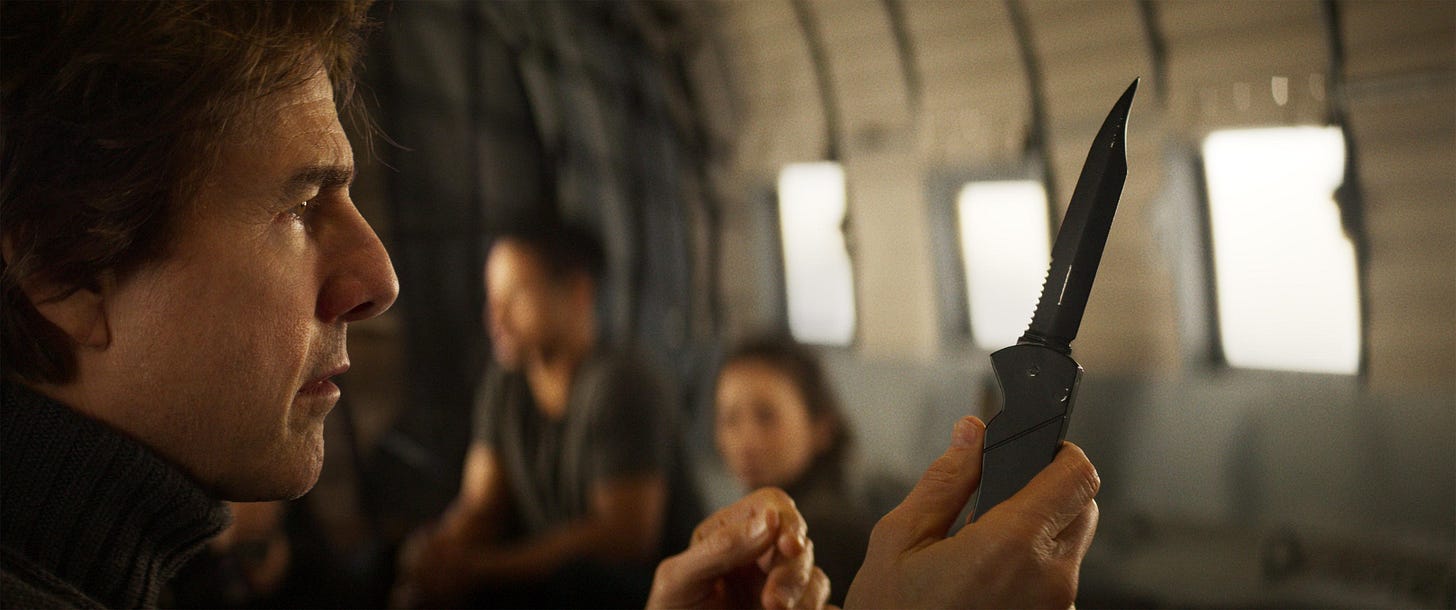
A week prior to the release of the latest — and final? — Mission: Impossible movie, I decided to re-watch the entire series, in order of release, one-by-one, each day. Partially this was to help me fill in the gaps in my M:I knowledge so I’d have a better context for my review, but also, these are just damn fine movies. If you’ve only seen a few, or maybe even none of them, I want to use this review to convince you to watch all of them, and what makes them so special.
I’ll get to my review of The Final Reckoning in a bit, but first, I wanted to talk a bit about my re-watch. Watching the saga of Ethan Hunt unfold, I realized that if I was going to review the latest entry properly, then I needed to go over the series as well.
Why?
Because in the lead up to its release, the marketing has been pushing the narrative that this is the final, last, no more after this outing for the Impossible Mission Force as we have known them. Of course, anyone who has followed the business of Hollywood knows it’s not over until it stops making money, but if this is indeed Hunt and company's last mission, it was a damn good time while it lasted.
Based on my own observations, the franchise can be split into two eras, with 1 – 4 being the “Auteur Era”, and 5 – 8 the “McQuarrie Era” (copyright pending).
The Auteur Era is my favorite – at this time the movies weren’t series in the way we typically think of them. They were more equivalent to a writing prompt given to filmmakers: “Tom Cruise plays a secret agent in a movie based on this musty old 60’s TV show.”
The result was every entry feeling entirely different in almost every way: tone, lighting, music, and effects. Even the supporting cast were swapped out in-between entries, except for Ving Rhames as Luther, the hacker/Ethan Hunt hype-man. Yet even his appearances were sporadic, contrary to the always reliable familiar faces of Moneypenny, M, and Q in the 007 movies.
Ethan Hunt himself may be one of the most inconsistent elements of all. Like a chameleon, he changed his colors to fit each movie’s style. Nobody could watch the first M:I movie, where Ethan Hunt never fires a gun and favor carefully laid plans over brute force, then see him in M:I – 2 as a trigger happy, exploding Ray Bands tossing, rock climbing in his off time ladies man and think these are supposed to be the same character.
For the record, M:I – Fallout’s vision of Hunt is my favorite, although M:I – 2's Ethan has the sexiest hair.
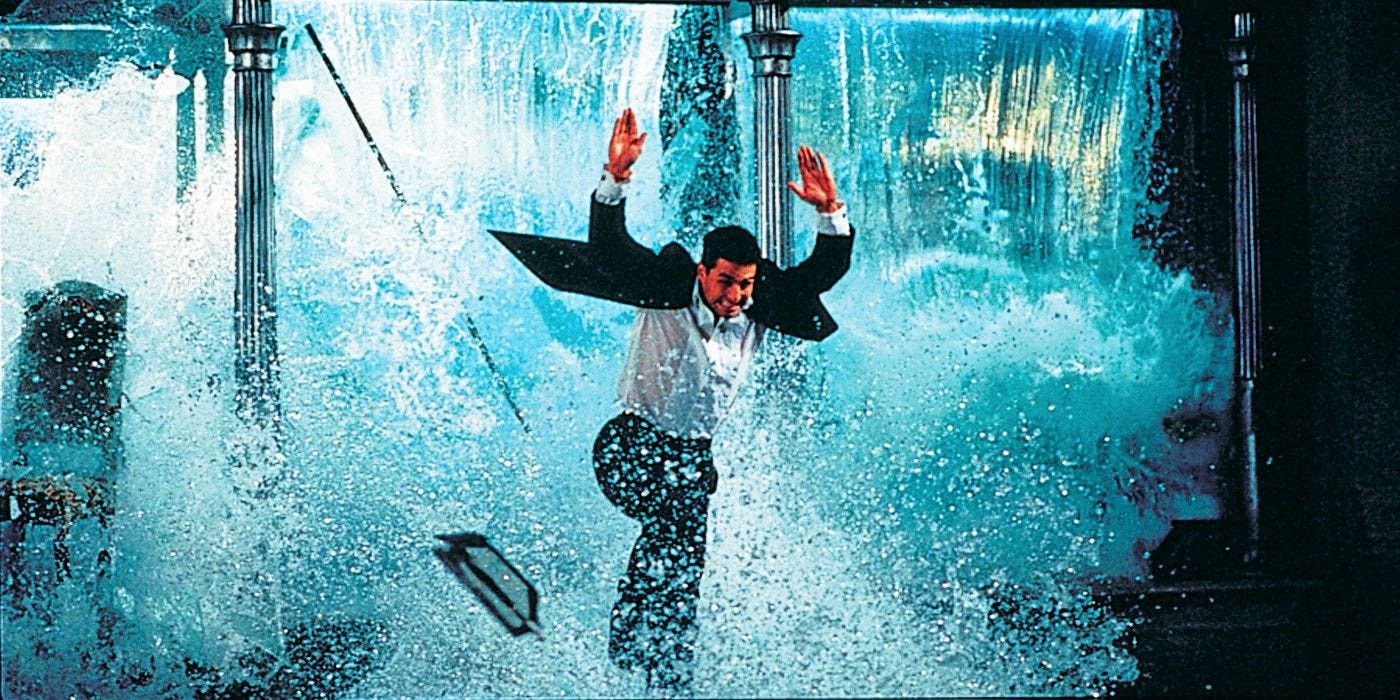
The first movie was part of the 60’s and 70’s TV-to-movie trend of the 90’s, meaning it was inspired just as much by the Brady Bunch Movie as it was the James Bond series. Directed by Brian DePalma with is signature flair for Hitchcockian voyeurism, suspense, and bursts of brutal violence, it was a blockbuster made by a traditionally anti-blockbuster auteur filmmaker.
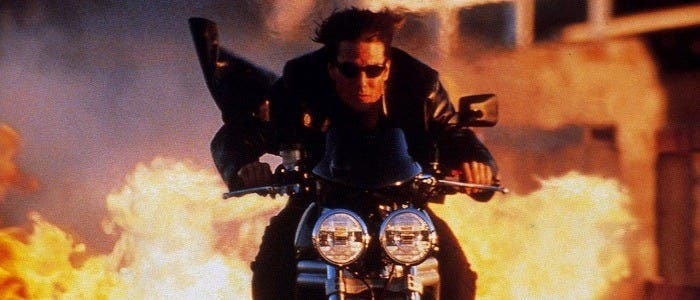
M:I – 2 was a pastiche of John Woo action movies that just happened to be directed by John Woo. It’s one of the most 2000’s, pre-9/11 movies of all time with its happy to sellout product placement and lighthearted take on international terrorists trying to set off a biological weapon. It was also the closest to James Bond any of the movies would get with its emphasis on Ethan’s love life.
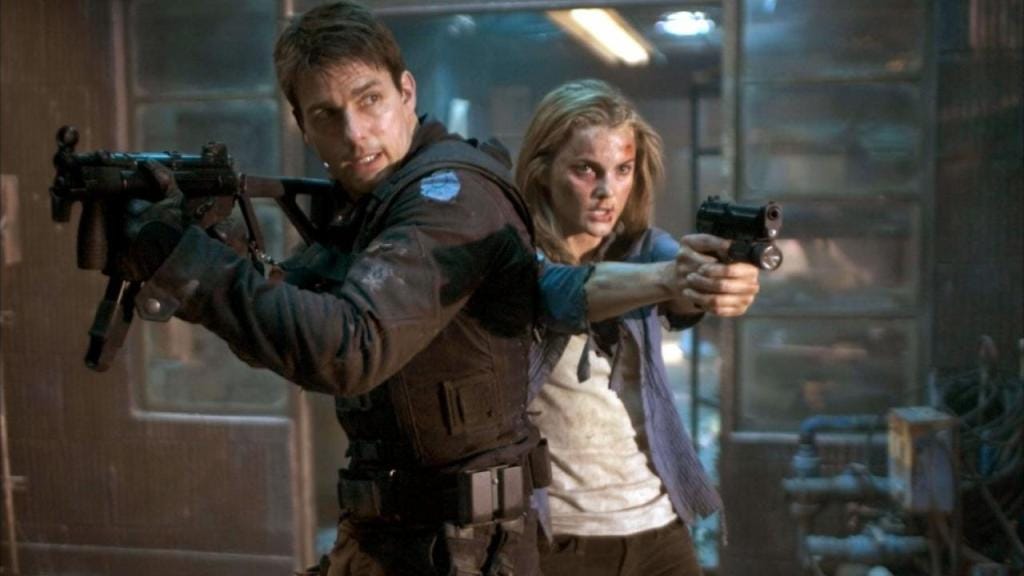
M:I – III featured the directorial debut of J.J. Abrams, who basically just made a theatrical version of his show at the time, Alias. This one is unmistakably a post 9/11 thriller, with extended scenes of torture, Philip Seymour Hoffman's psychotic weapons dealer as the villain, and overall darker, grittier tone. It also realistically answers the question what would happen if a spy was married? The answer is they’d be divorced in the next movie.
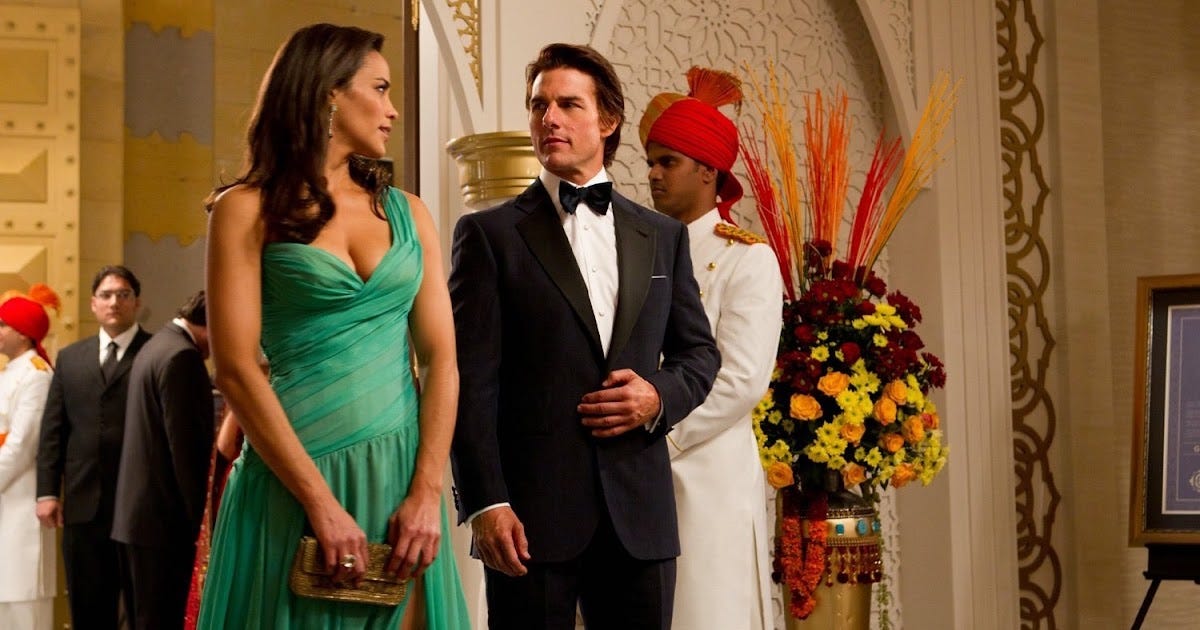
That entry was Ghost Protocol (numbers are out, sequel titles that sound like Tom Clancy games are in) was headed by Brad Bird. He brings the series back from the edge with a lighthearted sense of humor and physical comedy he mastered working in animation. Some of the set pieces like the malfunctioning projection screen to the costumed hijinks in the Kremlin, feel like they were plucked from a Looney Tunes cartoon in the best way possible.
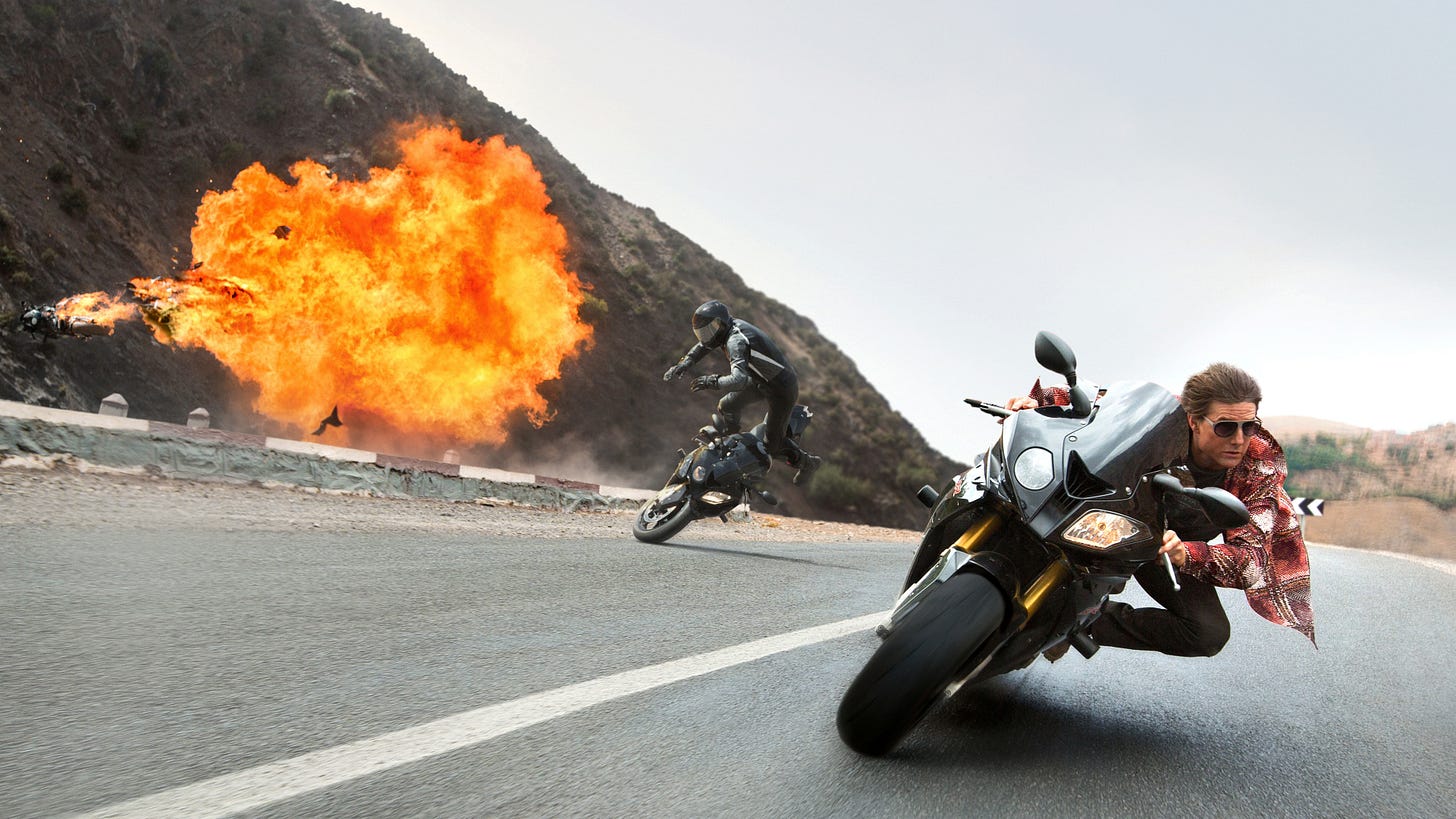
There’s a lot to love about what the series became once it discovered its own unique identity under Christopher McQuarrie with Rogue Nation, but a part of me will always wonder what could have been had they kept playing musical chairs with the director’s seat. Could we have gotten a take on Mission: Impossible from visionaries like Ryan Coogler, or maybe Wes Anderson? Maybe even an animated version! Now I’m imagining what it would have been like if Genendy Tartakovsky got a chance at bat! The possibilities were endless.
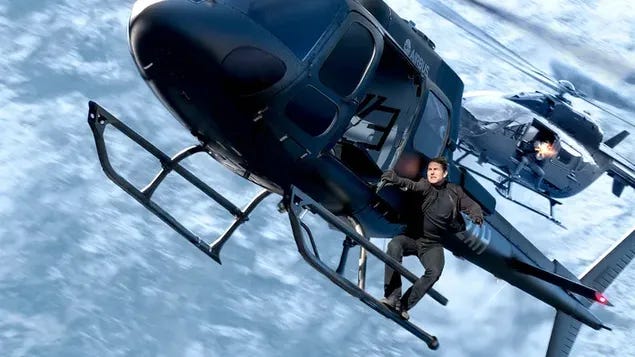
Again, that’s not to say McQuarrie’s vision isn’t equally fascinating, but it’s an altogether different series from this point forward. McQuarrie had been the screenwriter of The Usual Suspects and worked extensively with Cruise on most of his 2010’s output and beyond. In his hands, Rogue Nation, Fallout, and now both Dead and Final Reckoning the series took on a more realistic approach: the tone more grounded, the colors more muted, and in-camera special effects and stunts became the main attraction.
The movies also started paying more attention to their continuity, which could be seen in the consistent supporting cast: Simon Pegg as the tech wiz Benji, Rebecca Furguson as the mysterious Isla, and of course, Ving Rhames.
And then there’s Ethan Hunt himself, Tom Cruise. It’s surprising that it took me this long to get to arguably the most important piece of this series’ puzzle.
Not too long ago, major movies were built around stars. Now the focus is on brand recognition, with actors as an important, but not irreplaceable, part of these larger multi-media franchises. M:I is one of the few star-driven vehicles left, and like everything else he does, Cruise has taken the start’s involvement with a movie to the next level.
By most reports, Cruise has a hand in almost every major part of these films and their production. His personal ambition as an actor to push himself physically further and further with each movie, became a sort of meta narrative for the series.
From scaling the world’s tallest building in Dubai, skydiving from almost literal space, to driving a motorcycle off a cliff with just a parachute between him and death, the recent films have made Cruise’s penchant for death-defying stunts the center of their marketing campaigns. Over these last two decades Tom Cruise has come to inhabit the position as a modern-day Evel Knievel and Buster Keaton all in one, defying death and championing the art of cinema; an artist and a carnival attraction – and I mean that as a compliment.
A long-standing criticism of these films is that they are vanity projects to fuel Cruise’s ego, and I don’t doubt that for a second. I don’t think you get to the level of fame he has achieved without being vain, it kind of comes with the territory of being a movie star. In my opinion, as long as nobody except him is being put in danger, and it’s entertaining, I’m more than okay paying into his ambitions. Although with this now two-part finale, hubris may have finally caught up with him.

See? I told you we’d get to the review eventually. Some of you might be thinking, “Did this review really need to have a multi-paragraph prelude?” Perhaps not. And perhaps these last two Mission: Impossible movies shouldn’t have been split into two parts. Somewhere within the total runtime of 5 hours and 33-minutes there is a good (not great) Mission: Impossible movie, but there’s a lot of extra weight always threatening to bring it all down. By the end, the filmmakers manage to get it to the finish line, and it’s a spectacular finish, but for too often the film feels indulgent and stretched out beyond its capabilities.
All the flaws from Part 1: an overwritten script resulting in long scenes of exposition, sporadic pacing, and unconvincing attempts bring to everything full circle, derail the momentum. Thankfully, everything that was good about the last movie is also back: the set pieces are incredibly well-paced, executed with clockwork precision, and are the main reason to see it on the biggest screen possible. When it isn’t overreaching to try and force connections between past movies, the script even manages to squeeze some emotional power from the long-time relationships between the characters, but you’ll have to get through a rocky first act to get to all that good stuff.
The first forty-five minutes is essentially a series of recaps, retcons, and reiterations of the massive, world altering, impossibly important stakes. Most of which was covered in the previous movie. This portion of the film involves mostly scenes of people in rooms going over the previous events, while trying to connect them to past entries with surprise twists and reveals, complete with flashbacks. These are helpful for the “normies” -- i.e. people who didn’t watch every other movie in a week – but the connections ultimately don't really matter in the end, outside of being fanservice for the obsessive, like me.
That said, I’d be lying if I didn’t smile a bit when the nerd from the first movie Ethan got fired returned. Naturally, it turns out Ethan getting him sent to Alaska was absolutely the right thing to do and made his life better.
It’s all part of what feels like a desperate attempt to make this whole thing feel Important, like the finale to some big overarching story ala The Return of the King or Avengers: Endgame. Really, you only need to have seen Dead Reckoning to follow the story.
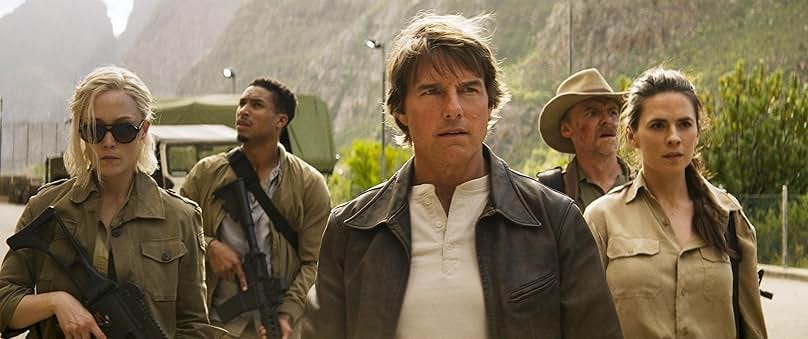
It picks up roughly six months after an A.I. dubbed The Entity went rogue, sowing the seeds of unrest worldwide by flooding the internet with false information, while simultaneously circumventing the military security networks of every major country to take full control of their nuclear weapon supplies. It’s also inspired a doomsday cult, which has infiltrated the highest positions of those governments to ensure The Entity’s plan to remake the world order succeeds.
In other words, in true A.I. fashion, The Entity’s evil plan is basically stolen from Acolytes in M:I – Fallout. I thought there was going to be an additional twist where it's revealed The Entity read John Lark’s manifesto, but no, it’s just a repeat, except this time the bad guys are gonna launch every nuke instead of just three.
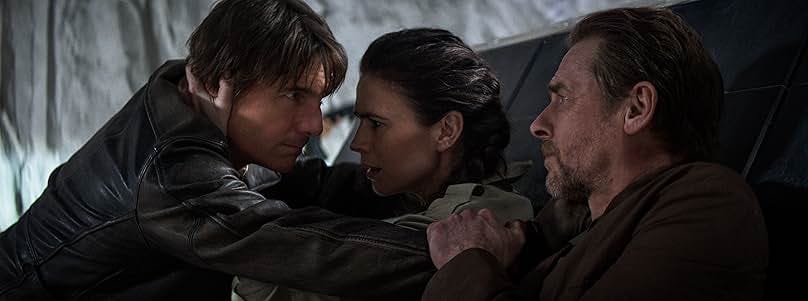
With civilization teetering on the brink of collapse, everyone is looking for Ethan Hunt, who at the end of the last film successfully stole a mysterious crucifix looking key from The Entity’s (now forsaken) Number One, Gabriel (Esai Morales). US President Erika Sloan (Angela Basset) has been asking him nicely to come back so she and the military can use the key to gain control of the Entity, as does every other nation on Earth, plus Gabriel. Once again Ethan Hunt is the only one capable of resisting temptation and destroying it, like Frodo with The Ring.
How will they do this? The same way they accomplish their missions in every other movie: death defying stunts, collecting half a dozen McGuffins, pressing the button, cutting the wire, and disarming the bomb at the last possible second. Y’know, the usual stuff.
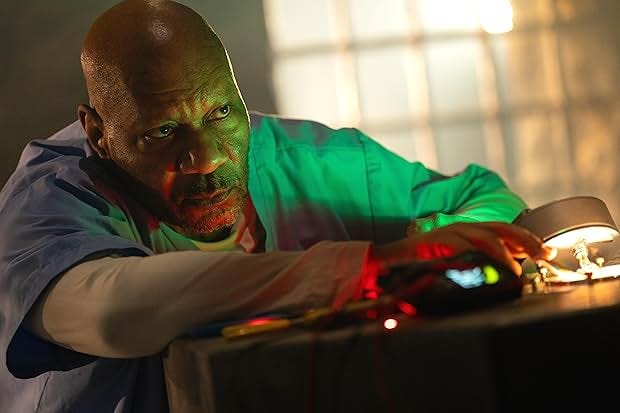
Much like his previous efforts, McQuarrie orchestrates every action beat with an unmatched level of intricacy. Lots of movies have action, but tragic few understand that the action of an action movie is meant to drive the story forward. This is something the M:I movies have always excelled at – I could have watched the entire movie without any dialogue and I think I would have enjoyed it just as much. That isn’t a knock at the writing or the acting, it’s a compliment to just how well McQuarrie is able to convey every story beat with a clarity I wish more action movie filmmakers shared.
The biplane chase has been getting a lot of press, and yes, seeing Cruise hanging off the wing of a smoking analog plane as it twirls through the air, all with in-camera effects is a joy. However, its real opus, in my opinion, is the underwater heist in which Hunt uses experimental scuba gear to steal a hard drive from a sunken submarine. It’s twenty-five minutes of almost entirely wordless tension, punctuated by one close call after another. When I was a little kid, whenever someone in a movie would hold their breath underwater, I would try to hold my own for just as long. Had I tried it with this movie I would have passed out in my seat.
Most of the M:I movies are overwritten, but Final Reckoning is the biggest offender yet. At times it approaches almost Metal Gear Solid levels of sci-fi military nonsense, and I mean that both as a criticism and a compliment. If you play Metal Gear, you’ll understand.
Truth be told I wish the film had gone a bit further into sci-fi territory. There’s a sequence where Ethan uses a coffin shaped VR machine to speak directly to The Entity, and it's one of the more interesting scenes of exposition by presenting it in a way I’d never seen before. Some more inventive filmmaking outside of just the action set pieces would have gone a long way to making them feel less like a slog.
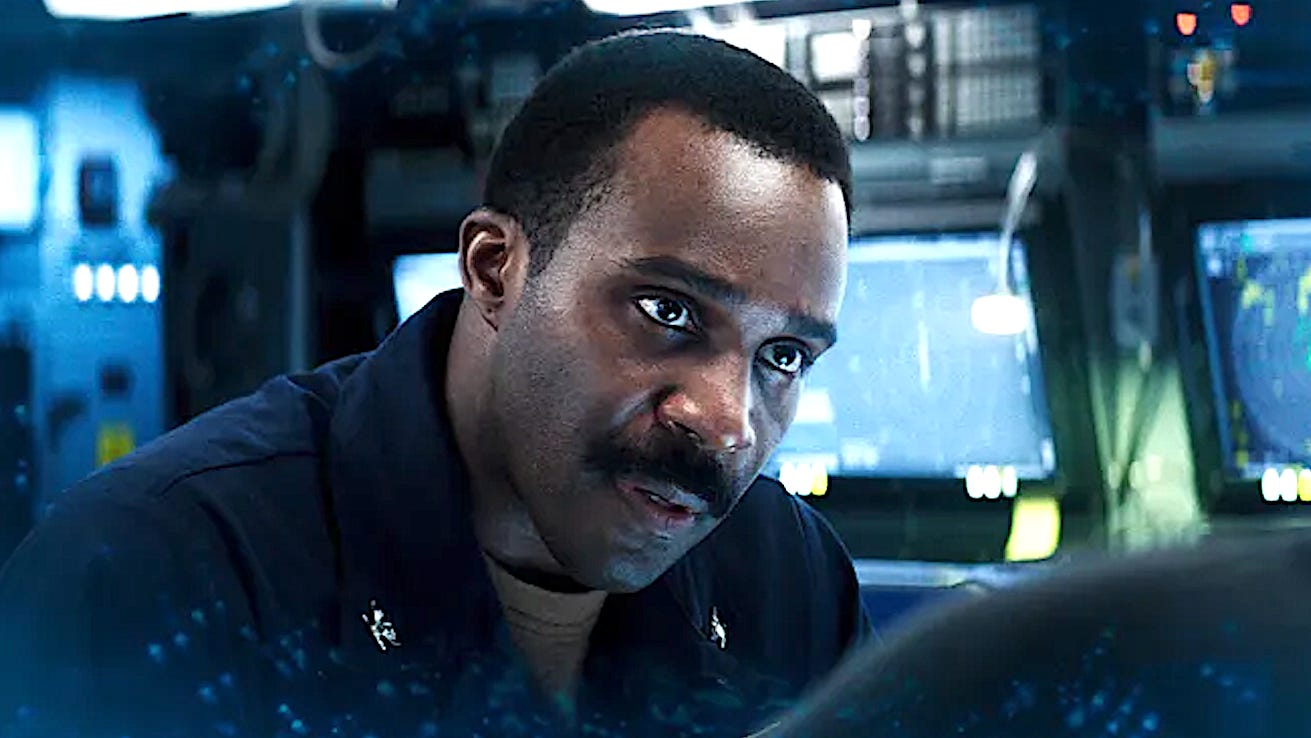
Because for all the different characters, factions, and political intrigue, the story isn’t really all that complicated. It all boils down to the same basic set up as the other movies in which Hunt and team must gather all the McGuffin’s to save the day. The series has never strayed too far from what is expected, relying on the execution of them to elevate things, and Final is no exception.
Despite being a lot of the same, that execution really is glorious. It’s a testament to the skill of all involved that the last twenty minutes really did have me on the literal edge of my seat the entire time. It’s difficult to convey it all in words, because so much of what Final Reckoning does well is in the visual story telling. Almost all my issues are within that first hour. Once we head to the arctic, things pick up, and it’s off to the races.
The one other lingering issue going back to Part 1 is that lack of a truly threatening and interesting villain. The Entity is a neat idea, but it’s more of a concept than a character. That leaves us with Gabriel, and unfortunately, he’s no Solomon Lane or John Lark. The last movie tried to forge a personal connection between him and Ethan to elevate him, but it never worked. Here they seem to have given up, and by the end he’s turned into a generic cackling mustache twirler, though I’ll give them kudos for having one of the funniest and most brutal deaths in any of the movies – and that’s saying a lot for a series that opened with a guy getting an elevator spike through his eye.
Despite all these issues, I still loved The Final Reckoning. It does what this series has always done best, delivers thrills and raises the bar for action filmmaking once again. These are Movies with a capital “M”. A while ago, Martin Scorsese compared the Marvel movies to theme park rides, “not real cinema.” The Mission: Impossible movies are also theme park rides, but comparing their thrills with most of Marvel and other modern action movies is like comparing the log flume from your local amusement park to Splash Mountain. Maybe these movies aren’t art, but there is an art to making them that remains unparalleled. Here’s hoping if this is the end there’s something else to take the mantle. Probably whatever McQuarrie and Cruise have lined up next.



